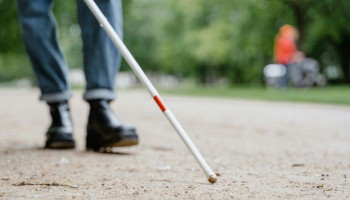
Samsung in collaboration with a Seoul-based research institute Sahmyook University is designing a wearable robot called EX1.
The research institute last week brought to light few chunks of the progress it has made for the development of exosuit in conjection with the South Korean electronics giant.
The robot is being designed to improve the mobility of elderly people, or those with minor physical impairments. Since the wearable robot attaches to the human body — on the legs and hips — and provide assistance in moving, it is said to be lightweight, flexible and user-friendly exosuit that does not require much effort to operate or carry it.
Read more: Harvard's exoskeleton enhances walking, reduces falls in Parkinson's patients
The robot can precisely pinpoint wearers' movement and ensures the provision of needed force, such as to push or pull, to make it easier for them to sit, stand, walk, run, and climb stairs effortlessly, as reported by Tech Crunch.
The suit has the potential to be deployed in a wide array of fields, and healthcare, military, sports, and entertainment, are a few to mention.
Not only does the exosuit assist in walking and running older people who face difficulty in moving, it also helps to effectively perform nominal and simple exercises to further improve their physical fitness, said Wan-hee Lee, a professor at Sahmyook University’s College of Health Science
“EX1 can increase their participation in exercise and serve as a guideline for exercising the right way,” said Lee.
The wearable robot can also be connected and controlled with smartphones or smartwatches, on which users can have on display relevant information like the suit’s battery, speed, distance covered, and calories consumed and burned by the user.
During a four-week research study, individuals wearing the exosuit experienced a 6.63% decrease in the duration of the Timed Up and Go (TUG) test, along with an average 12.42% increase in stride length, a 21.29% increase in pushing force, and a 1.71% decrease in waist-hip ratio.
These findings were based on participants using the EX1 for 50 minutes per day, three times a week, over a month.
The professor added, “Our findings provide a solid foundation for developing various types of improved and advanced wearable robots. This will further expand the global wearable robot market, promoting further research and commercialisation.”















